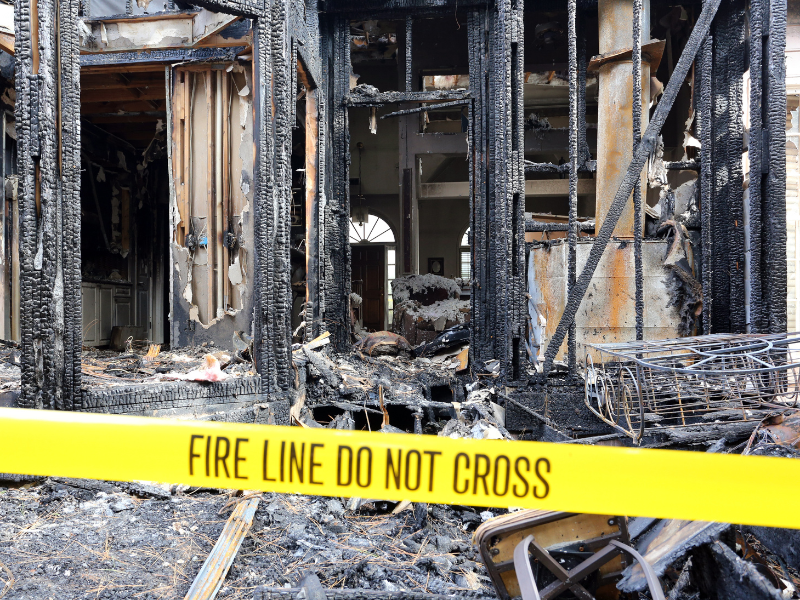
Experiencing a home fire is one of the most traumatic events a homeowner can face. Beyond the immediate shock, the recovery process can feel overwhelming. The aftermath of a fire often leaves a trail of destruction, not just to your home but to your peace of mind. However, home fire recovery is possible with the right approach. In this comprehensive guide, we’ll walk you through the key steps you need to take to rebuild and heal after a home fire. From securing your property to addressing emotional recovery, we’ve got you covered every step of the way.
OR
Your credit card will not be charged until the day of delivery.
Free Cancellation upto 24 hours prior to delivery
your reservation is complete. check your email for your reservation receipt
Published: January 15, 2025
Experiencing a home fire is one of the most traumatic events a homeowner can face. Beyond the immediate shock, the recovery process can feel overwhelming. The aftermath of a fire often leaves a trail of destruction, not just to your home but to your peace of mind. However, home fire recovery is possible with the right approach. In this comprehensive guide, we’ll walk you through the key steps you need to take to rebuild and heal after a home fire. From securing your property to addressing emotional recovery, we’ve got you covered every step of the way.
The first and most crucial step in home fire recovery is ensuring that your property is safe to re-enter. After a fire, the structure of your home may be compromised, and hidden dangers could threaten your safety. Fires can weaken foundations, damage electrical wiring, and leave hazardous debris. Before you even consider salvaging any belongings or starting the cleanup, make sure you’re cleared to enter.
Here’s what you need to do before entering:
Once you’ve received clearance, take steps to secure your property. This may include boarding up windows and doors to prevent unauthorized access and further damage. Consider adding temporary fencing or lighting to enhance security during the recovery process.
Home fire recovery often begins with a call to your insurance provider. After a fire, your home insurance policy will likely cover much of the damage, but it’s essential to understand the specifics of your coverage. The sooner you notify your insurance company, the sooner you can begin the claims process. Be prepared to provide detailed information about the fire and any damages to help expedite the assessment.
When contacting your insurance provider:
Your insurance company will likely send an adjuster to assess the damage. Make sure to keep track of all communications with your insurer and document the claims process. This will help ensure that all details are accurate and can be referred to if any discrepancies arise later.
Once you’ve secured your property and initiated your insurance claim, the next step in home fire recovery is cleanup and restoration. Fire damage can be extensive, leaving behind soot, smoke, and water damage. The sooner you start the cleanup process, the better, as lingering smoke and water can cause further damage and health risks. Consider hiring professionals to ensure the cleanup is done thoroughly.
Here’s a breakdown of what needs to be done during the cleanup:
While some of these tasks can be handled on your own, it’s often best to hire a professional fire restoration company. They have the tools and expertise to handle the job safely and efficiently, ensuring that your home is fully restored to a livable condition.
Once the cleanup process is underway, the next phase of home fire recovery is rebuilding your home. Depending on the severity of the fire, this may involve repairing or replacing structural elements, like the roof, walls, and foundation. This stage can be lengthy, but it’s essential to rebuild carefully and correctly to avoid future issues. Keep open communication with your contractors to stay updated on progress.
When starting the rebuilding process:
Rebuilding can take time, so it’s important to be patient and allow the professionals to do their work. Make sure to regularly check in on the progress to ensure everything is on track. Ensure that all work is completed to your satisfaction before moving back in.
Home fire recovery isn’t just about rebuilding your property—it’s also about healing emotionally. A home fire is a traumatic event, and it can take a significant toll on your mental health. It’s essential to address your emotional needs during this challenging time.
Here’s how to take care of your mental and emotional well-being:
Remember, emotional recovery takes time. Be patient with yourself and give yourself the space to heal.
Once your home is rebuilt and you’ve settled back in, it’s time to take proactive steps to prevent future fires. Home fire recovery isn’t just about restoring your home; it’s about ensuring that your home is as safe as possible moving forward. Safety should always come first.
Here are some fire safety upgrades to consider:
By making these upgrades, you can significantly reduce the risk of another fire and ensure that your home is safer for years to come.
Home fire recovery is a long and challenging process, but with the right steps, you can rebuild and heal. From ensuring the safety of your property to addressing emotional needs and preventing future fires, each phase of recovery is essential to restoring your life and home. Take your time, stay organized, and don’t hesitate to ask for help when needed. With patience and perseverance, you’ll emerge from the devastation of a home fire stronger than ever. Remember, every small step forward is progress toward a brighter future.
For help with storage during the recovery process, visit UNITS® Moving and Portable Storage or call us today at (855) 981-8648.
Call
Our local owners and managers are ready to assist you in what you’ll soon be calling your easiest move yet. Get started today by filling out our online quote form.